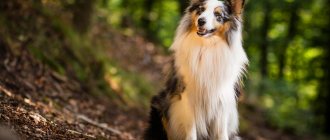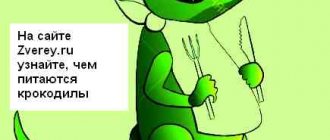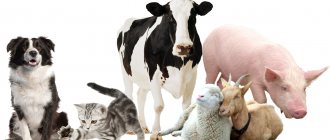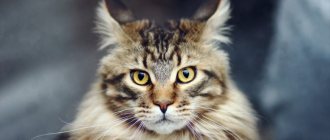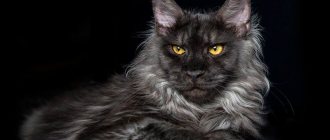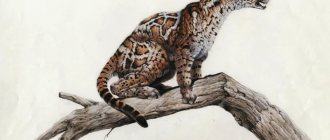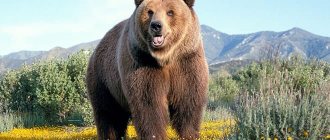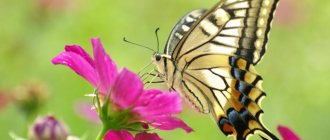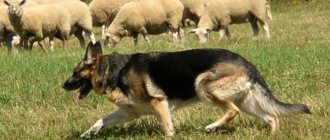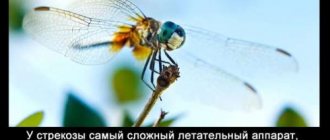Large sizes, tufts on the tips of the ears and other striking differences from other cats have given rise to many legends and myths about the appearance of Maine coon seals.
There are several assumptions related to the history of the origin of the Maine Coon breed - there are both romantic variations, largely based on the appearance of the animals, and scientific theories put forward by zoologists.
The future owner is recommended to first learn as much as possible about the pet - where the name of the breed came from, how Maine Coons developed not only in Europe, but also in Russia.
History of the origin of the breed
In the vastness of our country, a similar breed appeared quite recently, about 20 years ago or a little more. This happened when the well-known “Iron Curtain” fell and a mass of different, hitherto unknown breeds of cats and dogs headed towards us. The Maine Coon breed was no exception.
Interesting to know! If you believe the legend, then at one time there was a Captain Kun who preferred to travel with large long-haired cats. During the next voyage, some cats ran away from the deck of the ship, which contributed to the appearance of Maine Coons in various countries.
According to some information, the breed was first shown at an exhibition in Boston, after which the breed was forgotten for a long time, and undeservedly.
And yet, English farmers made a lot of efforts to preserve this amazing breed, which, in its breed characteristics, pointed to the American raccoon cat. Several decades ago, on the Isle of Man, which belongs to the English kingdom, a special coin was issued dedicated to the Maine Coon cat breed.
Maine Coon: description
The cat family today is quite variegated and numerous, which indicates a variety of breeds. Among this family, the Maine Coon breed stands out noticeably, which is distinguished by its impressive size, rather fluffy and thick hair, as well as an unusually fluffy tail. The unique appearance, as well as the peaceful disposition, allowed this breed to become a very popular pet, both abroad and in our country.
Breed standards
The main breed standards include the following data:
- The head is massive with an elongated skull. The ears are set high, so they are clearly visible, with clearly defined tufts.
- The eyes are oval-shaped and widely set, with irises of golden, amber or green shades.
- The body is powerful and quite large, which is not typical for domestic cats.
- The paws are quite large, and hairs stick out between the pads.
- The tail is long and fluffy, and its end reaches the shoulder girdle of the animal.
- The coat is just as thick and very fluffy.
- In the neck area there is a clearly defined “mane”, and on the “pants” you can see abundant undercoat.
- The coat color can be very diverse, including marbled and tortoiseshell, not counting shades of red, white and black.
- An adult cat can weigh from 7 to 15 kilograms.
- An adult cat weighs no more than 6 kilograms.
The above characteristics indicate that this breed is noticeably different from other cat breeds. Thanks to this uniqueness, cats of this breed are very popular among both foreign and domestic breeders.
Maine Coon cat personality
Despite such a serious and impressive appearance, the Maine Coon breed is characterized by a rather peaceful and sociable character. In addition, the animal gets along without problems with many pets if they have the same, non-aggressive behavior.
It is important to know! As a rule, the nature of the behavior of such an animal is better defined within certain boundaries as a result of proper upbringing. This must be done from an early age of the kitten, giving it enough time and attention.
Kittens of this breed are characterized as very active, so they love various outdoor games. In addition, their hunter instinct begins to manifest themselves quite early. Despite its large size, this breed grows and develops quite slowly. In this regard, the breeding process begins after 4 years of the animal’s life.
Lifespan
Foreign scientists, based on animal life insurance data, have come to the conclusion that the average life expectancy of Maine Coons is between 12-13 years. Despite this, some individuals (almost half) lived up to 16 years, or even more, but with proper care and maintenance.
MAINE COON - INTERESTING FACTS ABOUT ANIMALS
Kinds
The breed is considered native and one of the oldest in North America. But breeders from Europe created new lines, leaving a recognizable appearance, but assigning new features to the cats. This is how two intrabreed lines appeared - American and European.
- American Coons have a strong and strong bone structure; they are slightly lower than their European relatives, but are not inferior to them in weight and power. Americans have a wide head; the transition from the convex forehead to the muzzle is more noticeable. The eyes are round. The ears are shorter and wider apart than those of Europeans, and lush “lynx” tassels are not adopted. Outwardly, they are more similar to the Norwegian forest or Siberian breed.
- The European type was formed in the 90s of the last century. An important difference is slightly slanted and squinted eyes. It was these individuals who became famous for their slightly predatory and contemptuous gaze due to the unusual shape of their eyes. Their muzzle appears triangular, the body is often elongated, the tail is long, along the back it should reach the shoulder. The paws are high.
Maintenance and care at home
Firstly, you should take into account the fact that this is a large breed, so it needs a little more living space. Based on this, arranging a cat's corner for a pet requires a serious approach, since it determines how much the animal will be provided with the opportunity to burn calories. If an animal is deprived of the opportunity to spend time actively, it will quickly begin to gain excess weight, which can provoke the development of various ailments. As a rule, the life expectancy of a pet directly depends on this.
In order for an animal to please family members for many years, it must be provided with the following accessories:
- Pukhoderka.
- Non-metallic comb with wide teeth.
- Massage, non-metallic brush with antistatic coating.
- Shampoo-conditioner.
- Bath terry towel.
- Nail clippers or special tweezers.
- A special toothbrush and toothpaste.
- Ear cleaning solution or sterile petroleum jelly.
- With cotton swabs and regular cotton wool.
Maine Coons are one of the few breeds that respond well to being walked on a leash, so they can be walked like dogs. It is also necessary to take care of the safety of the animal by timely vaccination, as well as quarterly deworming. This is especially true if there are other pets in the house.
Important point! By walking a pet, the owner unwittingly exposes it to the risk of infection with ectoparasites.
Care and hygiene
As a rule, mandatory care and hygiene measures include monitoring the oral cavity, eyes and ears. That's why:
- Experts recommend removing natural discharge from the eyes daily using a damp cotton swab.
- Clean your ears regularly using special solutions or sterilized petroleum jelly.
- Once a month, ears are cleaned using cotton swabs, taking precautions.
- When feeding with dry factory food, teeth are brushed once a month, and in the case of feeding with natural food, then at least once every 2 weeks.
Due to the fact that the breed is distinguished by the presence of long and fluffy hair, it is necessary to properly and regularly groom it. The cat will have to be bathed once a week, and it is better to accustom the animal to such water procedures from an early age.
Interesting fact! Maine Coons generally take well to water procedures, so there should be no problems with bathing. The animal is also bathed immediately before being shown at an exhibition, as well as during periods of molting.
It is advisable that the animal be bathed with its ears closed. To do this, they can be covered with cotton swabs. Bathing should be carried out using special detergents designed for bathing animals with long hair. At the same time, we should not forget about the fluffy and long tail of the Maine Coon. After applying the detergent and evenly distributing it over the surface of the coat, the soap suds are thoroughly washed off several times with plenty of water. The use of special conditioners allows you to obtain a much better appearance of wool. In addition, this will make the process of combing the animal easier.
What to feed
The diet of this breed should be approached very responsibly, taking into account the active metabolism, as well as the weight of the animal. It is very important that the diet is balanced in all nutritional components. In this case, it is advisable to give preference to ready-made factory feed of the highest class. Such, for example, as:
- Royal Canin;
- Eukanuba;
- Eagle-Pack;
- Nutro;
- Hills.
Dry factory food can be combined with canned wet food from the same foreign manufacturer. It is not recommended to feed your animal a mixture of food from different brands. Before purchasing such food rations, it is a good idea to familiarize yourself with the contents of the package. It is very important that the content of plant components is minimal.
You need to know this! When feeding natural food, it is necessary that the percentage of meat in the Maine Coon's diet is at least 75 percent. The missing 25 percent of the diet should be diluted with eggs, liquid cereals, vegetables, seafood, and dairy products.
It is very important that the Maine Coon’s diet includes greens, as well as vitamin and mineral supplements. If there is no need, then switching an animal from feeding on natural ingredients to feeding on ready-made commercial diets does not make sense, and is not recommended. In addition, it is not advisable to mix diets from different manufacturers.
Nutrition for purebred cats. Maine Coons
Diseases and breed defects
As a rule, this breed has a good, stable immune system, so Maine Coons are considered healthy and hardy animals. They tolerate well even the conditions of colder climatic zones.
The most serious diseases are:
- Heart problems associated with hypertrophic cardiomyopathy, which develops against the background of autosomal dominant hereditary processes. As a rule, such problems are observed in middle-aged and elderly animals. As the disease progresses, swelling of the pulmonary tissues occurs with sudden paralysis of the hind limbs. After such negative processes, the death of the animal occurs.
- Wall muscular atrophy appears in kittens three to four months of age and is caused by genetic factors. When moving, the animal's back part of the body sways, which with age becomes an obstacle to the animal easily jumping onto various objects located at a height.
- Hip dysplasia, which can affect both joints at the same time. It is considered a genetically determined disease that makes the animal inferior. As a rule, older animals suffer and in the initial stages it manifests itself in the form of noticeable lameness.
Polycystic renal disease is also considered a hereditary disease, although it occurs quite rarely. Such diseases or predisposition to them are determined as a result of genetic testing.
Nutrition
Such a large breed of cat eats a lot and often. In nutrition, it is important to choose a direction - either you buy ready-made food of the highest class, or stop at natural products. If you choose the first option, add canned food to dry food 2-3 times a week, and these should be products from the same manufacturer. In the second case, there are also some tips:
- Protein foods that suit him include raw and boiled beef, rabbit and turkey. Pork, duck and goose meat should not be included in the diet, they are too fatty for it. You also need to give up sausages and smoked meats. Sea fish and boiled fish are preferable.
- Include fermented milk products, boiled yolks and quail eggs in your diet.
- The need for fiber is satisfied by selecting cereal porridges.
- Vitamins and minerals are added separately, as well as in the form of sprouted grains. General rules for all types of feeding: be sure to monitor the presence of water in the bowl, do not forget to give a special paste for removing hair from the stomach and buy a glass or metal bowl, plastic may cause be irritating to the skin.
Buy a Maine Coon: tips and tricks
According to FIFE rules, breeders must sell kittens at least 3 months old, although they can be put up for sale earlier, from the age of one month.
This allows the buyer to observe the animal for 2 months. In other words, you can reserve your Maine Coon in advance. As a rule, experienced breeders do not sell kittens unless they have behavioral skills and are not fully socialized.
Where to buy, what to look for
To buy a Maine Coon kitten, it is better to contact experienced breeders or a specialized nursery. In this case, you should pay attention to the fact that all documents that relate to both the kitten’s parents and their offspring are presented.
The documents must indicate:
- The pedigree of the parents, the nature of their behavior and temperament, the exact number of matings, as well as health data.
- Features of the kitten’s behavior, as well as behavioral skills, including health status.
If necessary, nursery staff or an experienced breeder should give appropriate recommendations or advice on maintenance, care, and diet. It is very important at this stage to decide on the diet, since it is not advisable to change it at all for a kitten at this age. If you plan to further show the animal at exhibitions, then it is advisable to purchase a purebred animal with all accompanying documents and a veterinary passport.
Maine Coon cat price
This is a fairly expensive cat breed, so even pet-class kittens cost at least 15 thousand rubles. Breeding class kittens, as a rule, cost at least 40 thousand rubles, regardless of the region. The most prestigious “show” class generally costs crazy money. You will have to pay about 95 thousand rubles for it.
Important point! If you order kittens from foreign nurseries, their cost will largely depend on expensive delivery. Therefore, you can count on a fairly tidy sum.
How to choose a kitten
A kitten is usually reserved at the nursery at the age of 1-1.5. The right of “first choice” is agreed upon even before the birth of the offspring. Babies are taken away at 3-4 months, after they have been vaccinated and quarantined.
Maine Coon kittens are not chosen based on photos. You should definitely visit the nursery and observe the litter. You should not choose the smallest and most defenseless. For the future owner, this may result in constant visits to the hospital. A Maine Coon kitten should be healthy, moderately well-fed, and playful. There should not be a full belly at 3 months. This rather speaks not of health, but of digestive problems. The gait is confident and there are no loose legs - when the hind legs are X-shaped and the front ones are widely spaced.
Owner reviews
Many owners note the fact that Maine Coon cats embody the best that is possible in relation to cats. These are animals with very aristocratic behavior that require appropriate attention to themselves. In addition, the cat is strong and graceful, but at the same time good-natured and affectionate. She treats both her owner and the rest of the family with love, and is devoted to them for life.
Adult Maine Coons are not known for making sounds when needed and not needed, but if a cat wants to play with its owner, it will definitely remind you of this by making original sounds. Unlike the sounds that other breeds of cats make, Maine Coons produce sounds with a characteristic vibrating timbre. If there is no need, the animal does not make sounds or makes sounds, but very rarely. It is noted that the timbre of their voice does not in any way correspond to their appearance and, especially, their size.
Enthusiasts who practice breeding of this breed monitor the preservation of the main characteristics of the breed, and also popularize this breed in our country. In this regard, they quite often travel abroad with their pets to find a worthy pair with the appropriate breed characteristics. This factor has a significant impact on the cost of kittens, although, as practice shows, this is quite reasonable and worth it.
Character
Maine Coons are loyal, affectionate, and sensitive. They are often called the perfect pets for keeping at home. The muzzle (of the classic type) is absolutely devoid of the harsh features inherent in other native breeds.
The behavior of Maine Coons is peaceful. They are absolutely devoid of aggression, are sociable and are able to find a common language with all family members. They get along well with other pets, even dogs. The only exception is rodents and birds. Hunting instincts and habits are very strong. The Maine Coon will hunt down, catch and destroy any rodent and will do it with pleasure. And he doesn’t care where the bird came from at home: it flew in by accident or lives permanently. He will definitely catch her too.
Children adore the Maine Coon, and he loves them. In a family with children, a cat can be both a nanny and a friend for them, and will gladly take part in games.
The Maine Coon is large, but can be invisible even in a very small apartment. The cat will not annoy its owner, but will prefer to watch his actions, sitting nearby. At the same time, Maine Coons are very loyal and ready to love selflessly.
They are not aggressive with strangers, but will not rush to their knees for affection. They will not exchange their owner for anyone.
Maine Coons are smart and amaze owners with their resourcefulness and intelligence. They easily get accustomed to the tray, scratching post, and various grooming procedures. They remember words and intonation well. If desired, they can be taught to perform different tricks.
Coons love to play and are very active despite their massive size. Toy mice are a favorite pastime of predators.
Voice is another feature of Maine Coons. It is rare that they will meow loudly. They are characterized by a quiet, velvety purr, rather a cooing or purring, which does not at all match the powerful large body. In America there is a nickname for them - “singing cats”.
From their ancestors, coons received another behavioral feature - they can fall asleep anywhere and at the same time in a bizarre position.
Females are distinguished from males not only by height and weight, but also by certain character traits:
- Cats are more independent. When meeting the owner, they will show joy and love, but will also quickly go about their business. Males are more like dogs in this way and are ready to follow their owner everywhere.
- Hunting instincts are more developed in females. And they are considered smarter than males.

